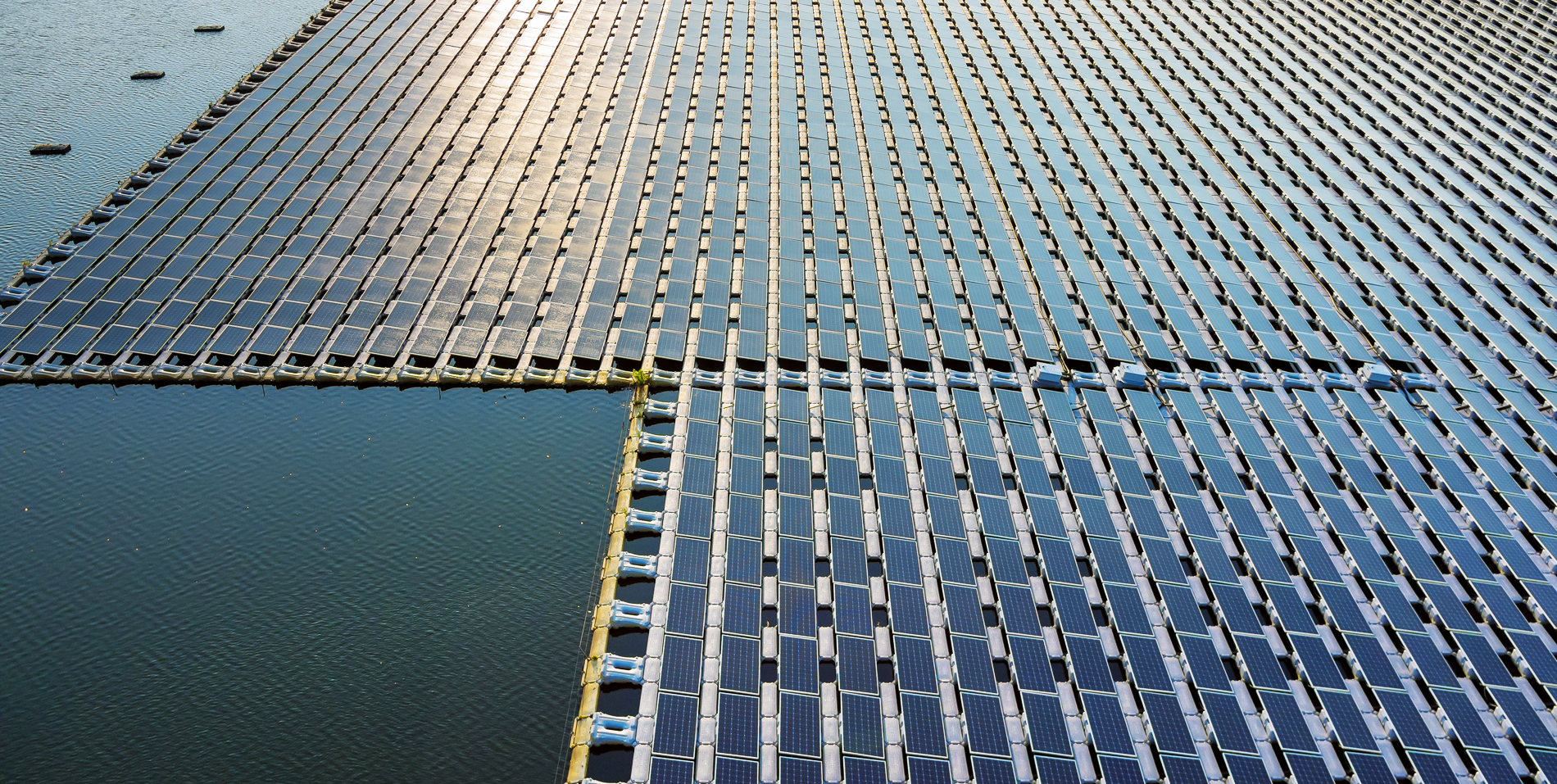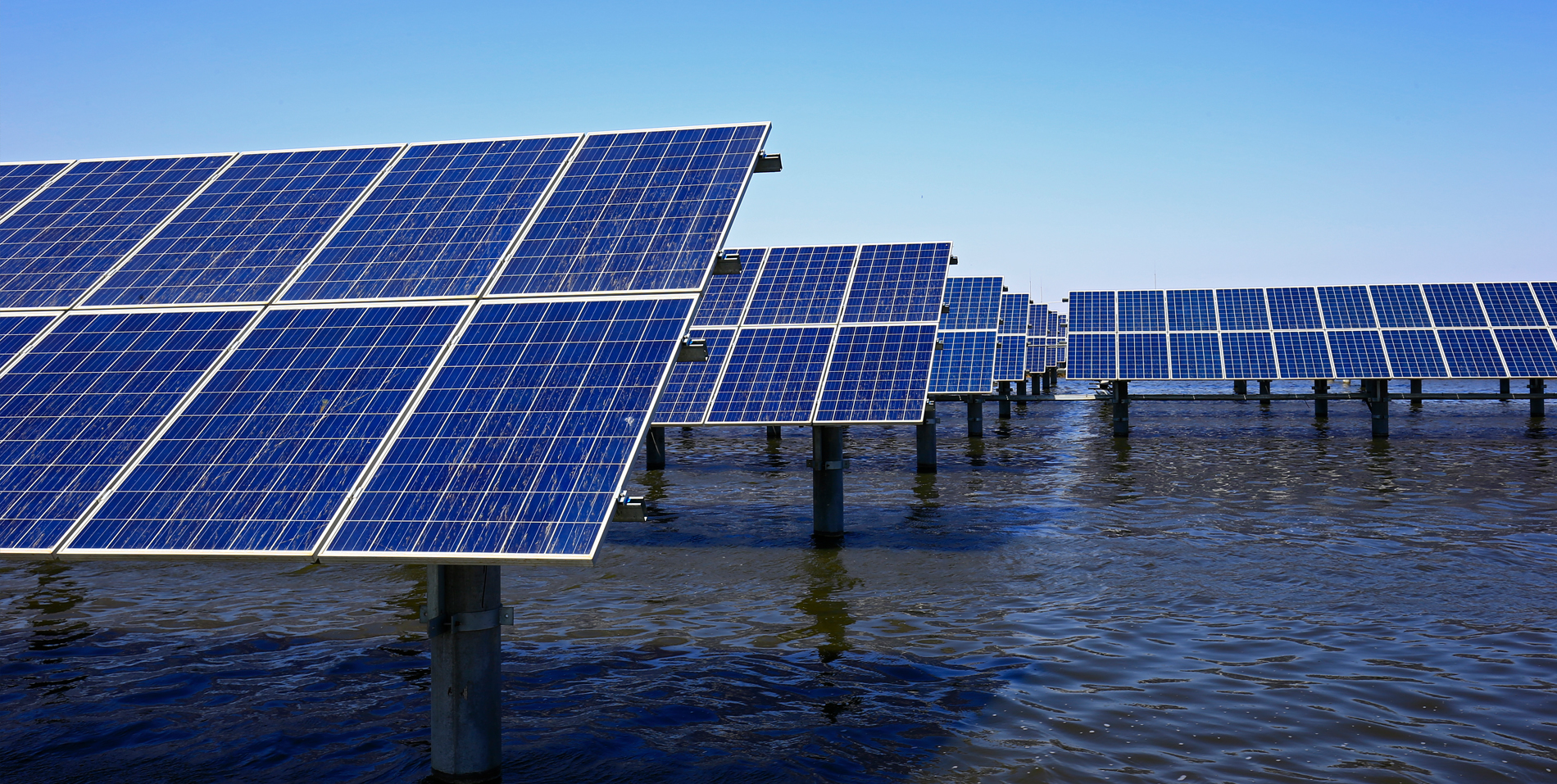One of the main problems with installing photovoltaic panels is that they require large areas of land, a factor that often limits the extent to which they can be installed. As such, industry experts have been looking for alternative solutions to allow the continued generation of renewable energy in large installations. This has led to the innovative idea of floating photovoltaic panels, which we will tell you all about! What are floating photovoltaic panels?
Floating photovoltaic panels are a new way of installing PV systems that use a body of water such as the sea, reservoirs, dams or lakes. They function in a similar way to ground panels, except that they are installed on a float that acts as a support and joins them together. They also incorporate a mooring structure that fixes the panels in the right direction and prevents them from moving with currents. However, stress caused by powerful waves means that photovoltaic installations are not always viable at sea. Another main problem is salt, which causes the panels to deteriorate over time. Therefore, other bodies of water, such as reservoirs, are a preferred. Benefits of floating solar panels This type of plant was first installed in 2013, and more and more projects are now being carried out due to their high potential and high performance. The main benefits and advantages they offer compared to terrestrial plants are listed below:
 Looking to the future Renewable energy is essential for combating climate change and improving air quality. The Spanish Ministry for Ecological Transition and Demographic Challenge has proposed a royal decree to increase the number of floating PV installations on state reservoirs, with the aim of increasing the installed capacity of solar energy. There are approximately one hundred large reservoirs located in the State owned public water domain. Projects will have to meet an extensive list of technical requirements, as set out in the proposal for the royal decree presented by the Ministry for Ecological Transition and Demographic Challenge (MITECO). In Spain, one of the most high-profile ventures is the pioneering project at the Sierra Brava reservoir (Cáceres). This floating photovoltaic installation has a surface area of 12,000 m2 and an estimated capacity of 1.125 MWp. The company responsible for this installation, Acciona, has proposed a study of how to optimise energy production with the floating panels, including looking at the environmental impact on the surrounding flora and fauna. |


